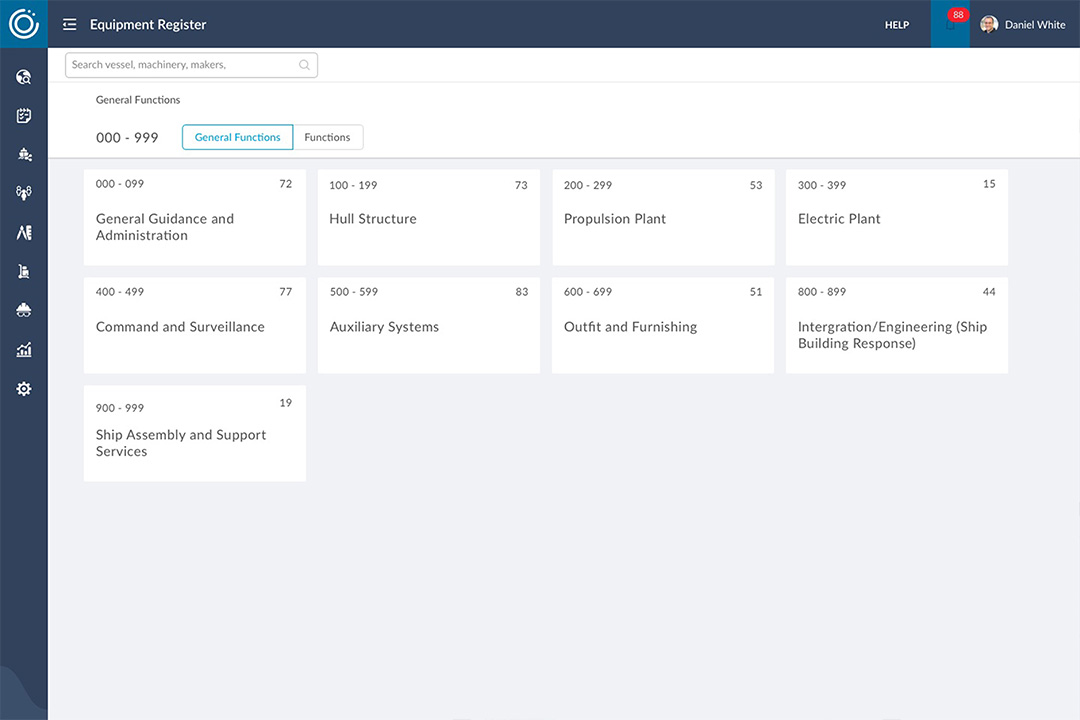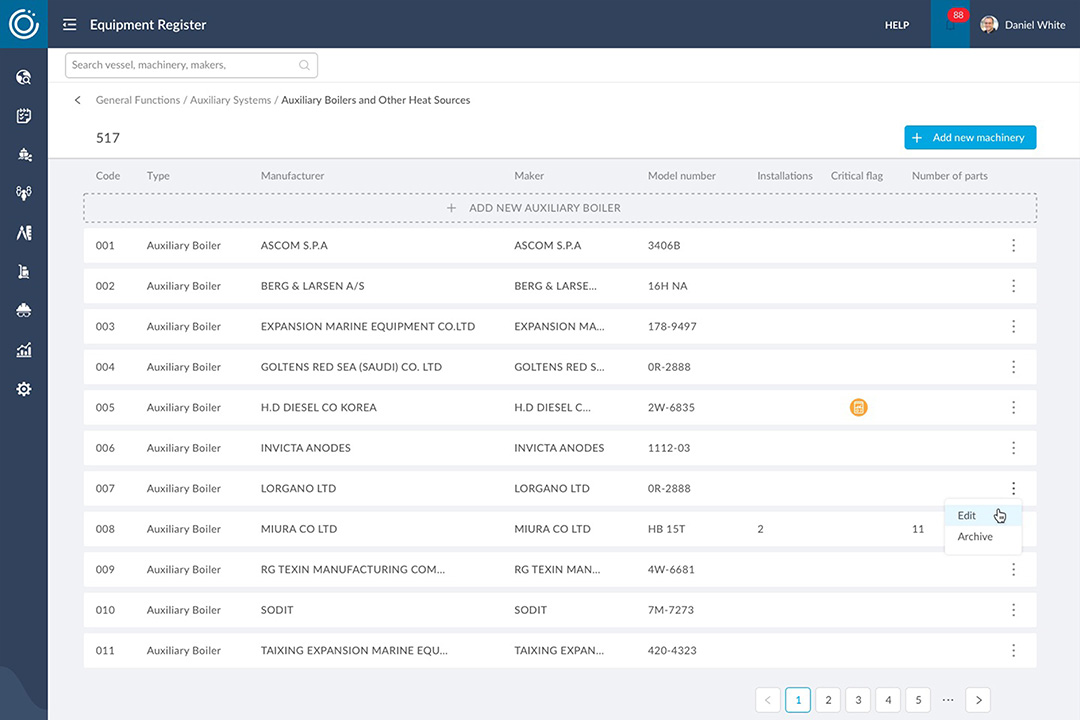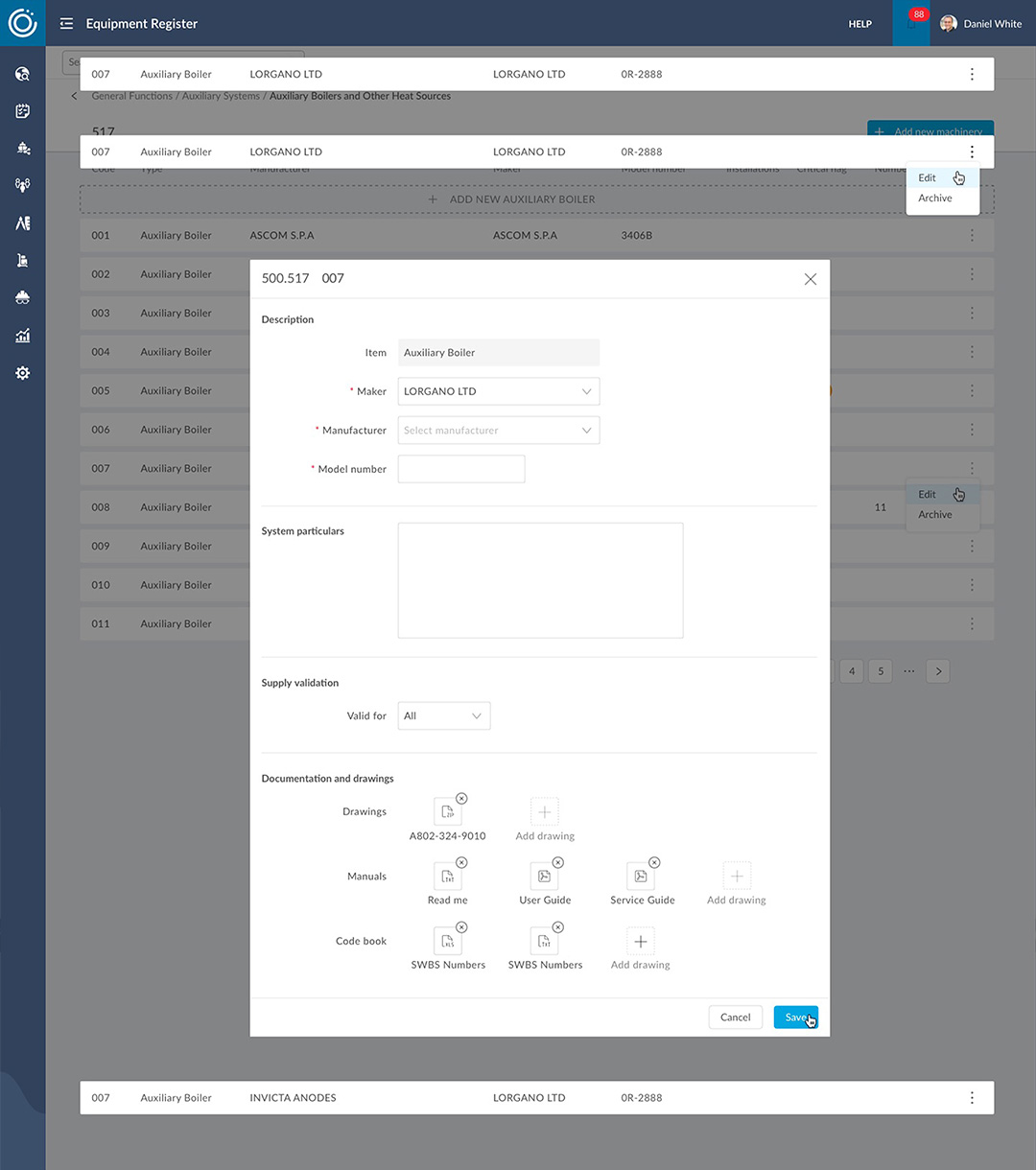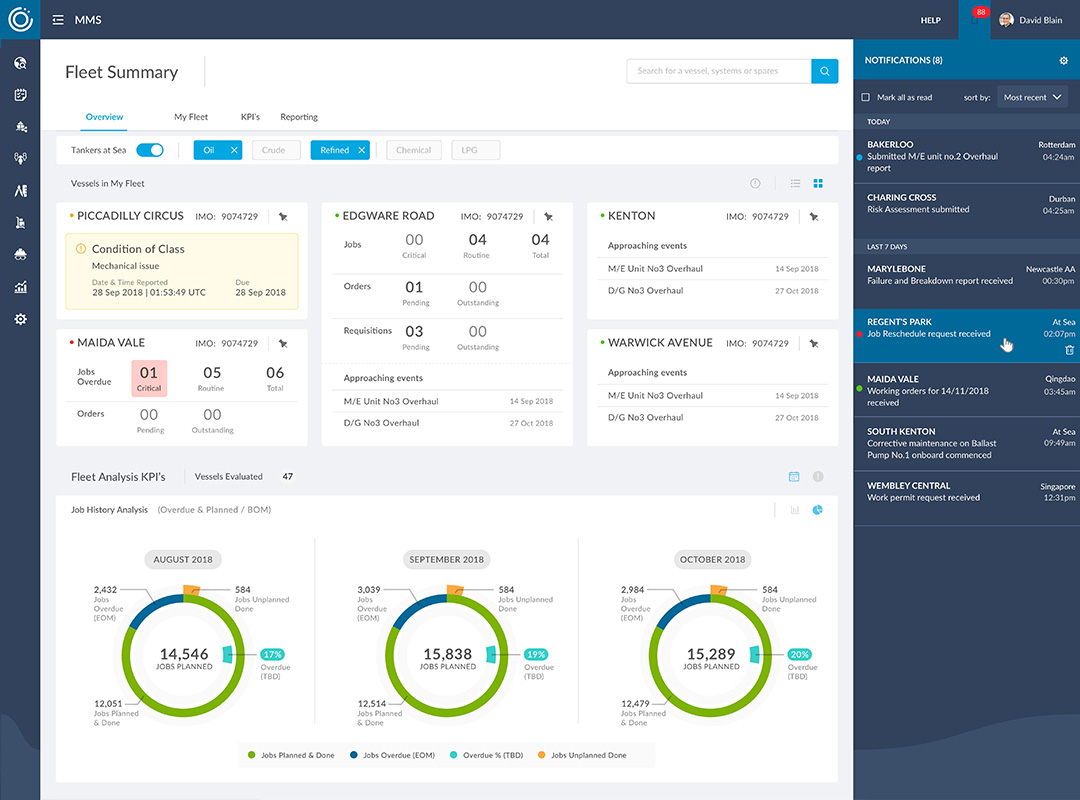The best path to an efficient Maintenance Management System that will align Chief Engineers schedule management across 150+ Vessels is through adoptions of the SAWE Classifications & WBS Codes Taxonomy.
I led the ideation, strategy and ‘end-to-end’ design for the Machine Parts Registry underpinning the Maintenance Management System.
Rough Seas Ahead
We were faced with finding a globally recognised taxonomy to allow us to identify & audit all vessel equipment & machinery to standardise maintenance work & in addition, support Chief Engineers scheduling practices across the fleet. The SAWE Classifications & WBS Codes were adopted to establish a proven standard recognised across the shipping industry.
Zodiac Product Owner
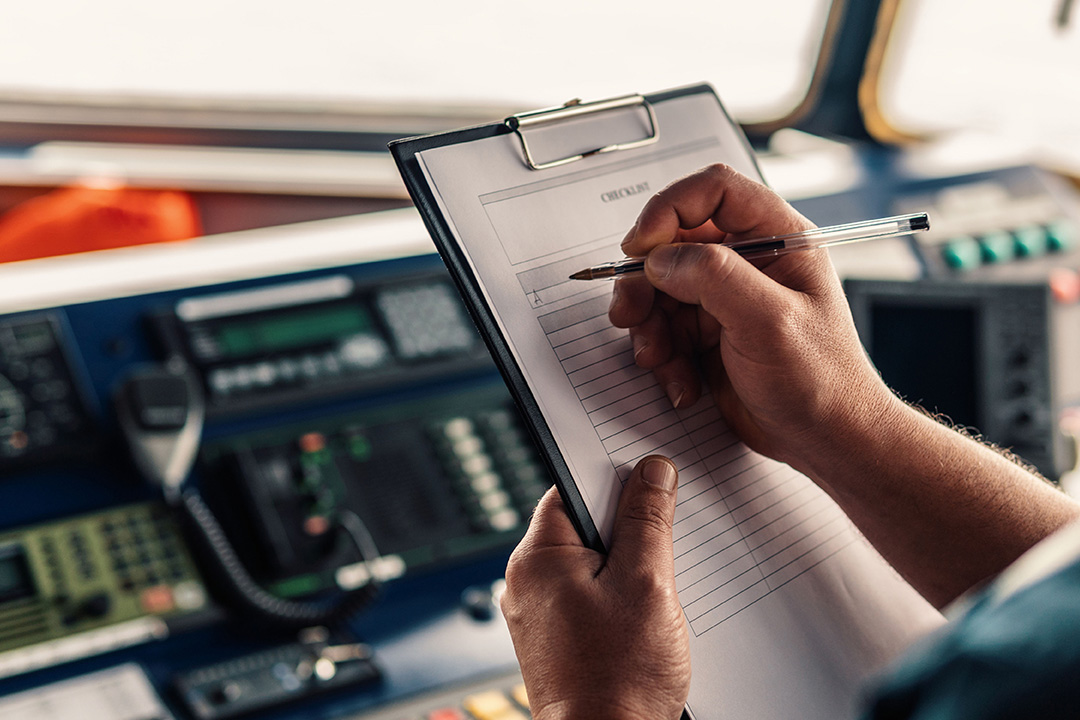
Key Challenges
Chief Engineers each maintained individual Excel-based maintenance schedules across the fleet
Low visibility of parts inventory across the fleet & warehoused
Minimal standardisation across onshore & offshore procedures
MMS will ensure that across the fleet maintenance schedules are data-driven & procedures standardised to ensure full visibility of work done prior to & proceeding with smooth onboarding & offboarding of Chief Engineers.
The Approach
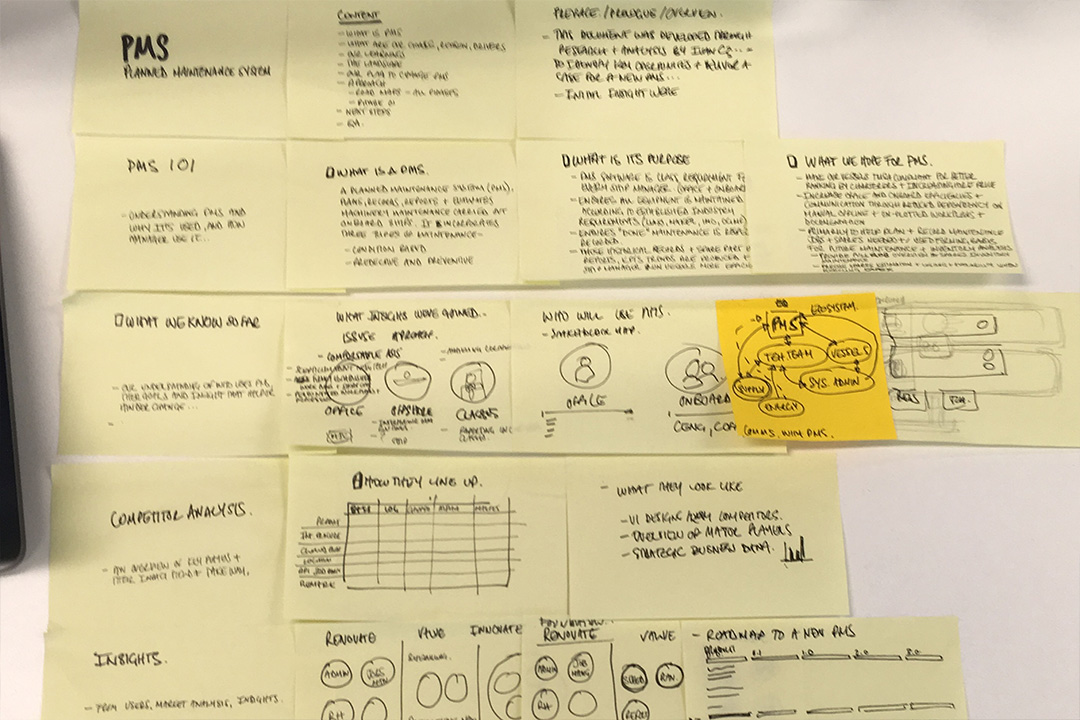
We first determined we needed to better frame the product needs & expectations through a broader product document that outlines the vision while identifying possible gaps or precedence in the current market & cost comparison of similar software.
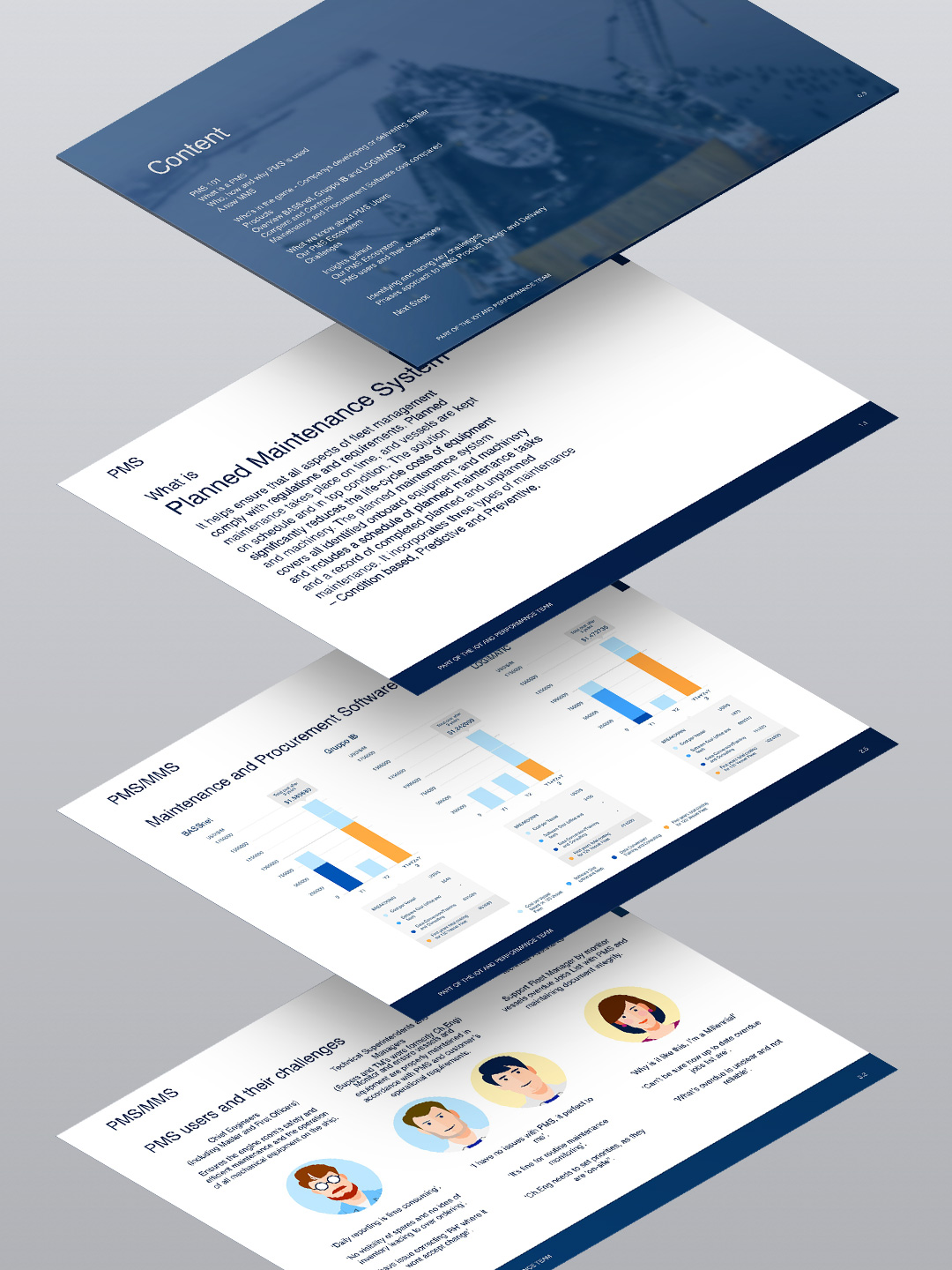
Interviewing users, & shadowing their daily tasks, helped us to better understand the current internal landscape & challenges facing them & the limitations of their current solutions & processes & the ‘workarounds’ adopted to ‘ease their pain’.
Key Insights
Implementation of WBS Codes for parts standardisation
Data driven refinement of maintenance scheduling
Optimisation of new vessel onboarding & machinery registration
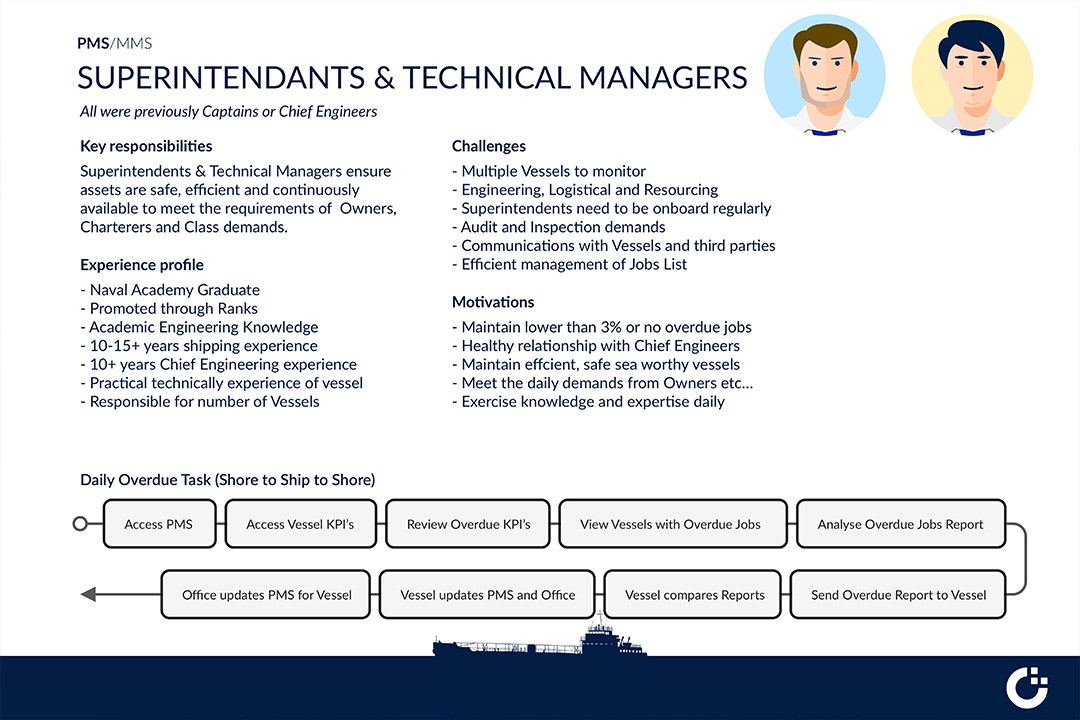
Communicating Design
I swiftly engaged the team in casual, collaborative sketching workshops & also laterally creating wireframes to translate ideas & alleviate vision gap to better articulate & distribute design rational.
I created two sets of user group documentation, to communicate requirements to the lead developer & support their quality assurance needs.
These deliverables consisted of Screen Flows, User Journeys (notes on these journeys helped to define transitions & user touchpoints) & Interactive Prototypes.
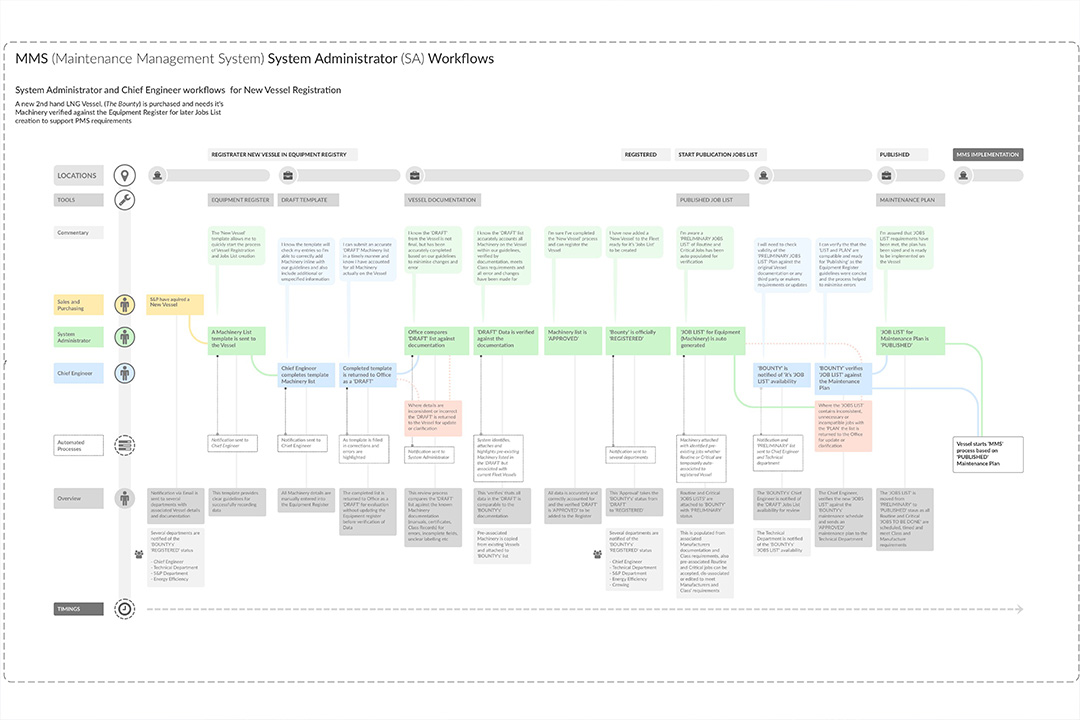
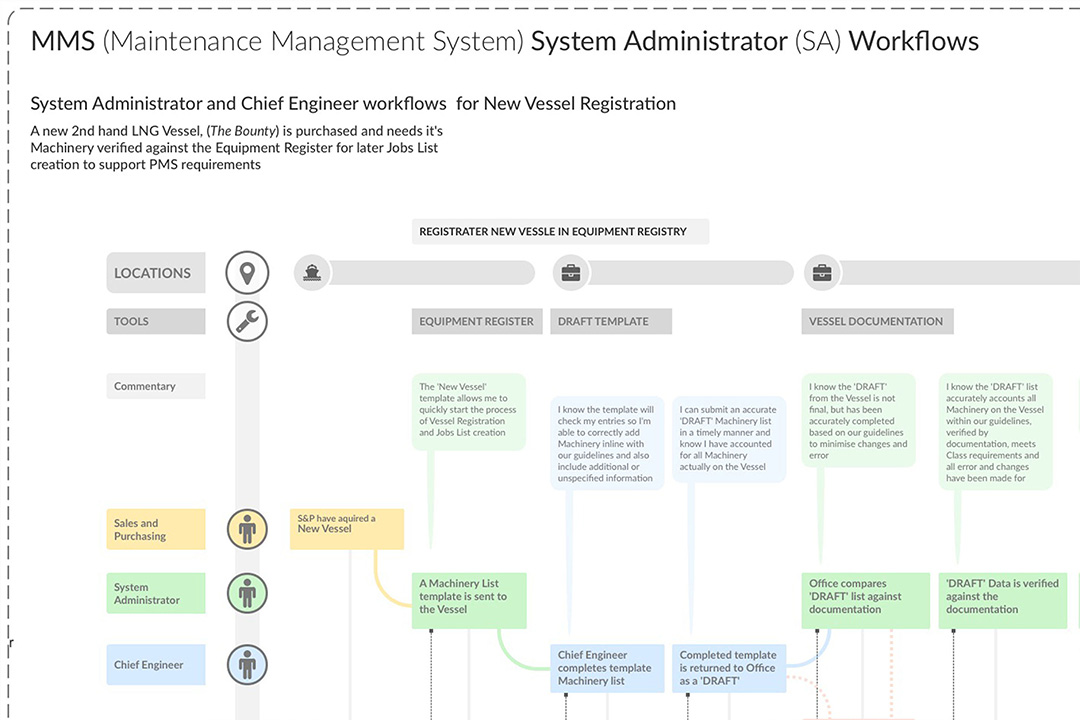
Wireframes
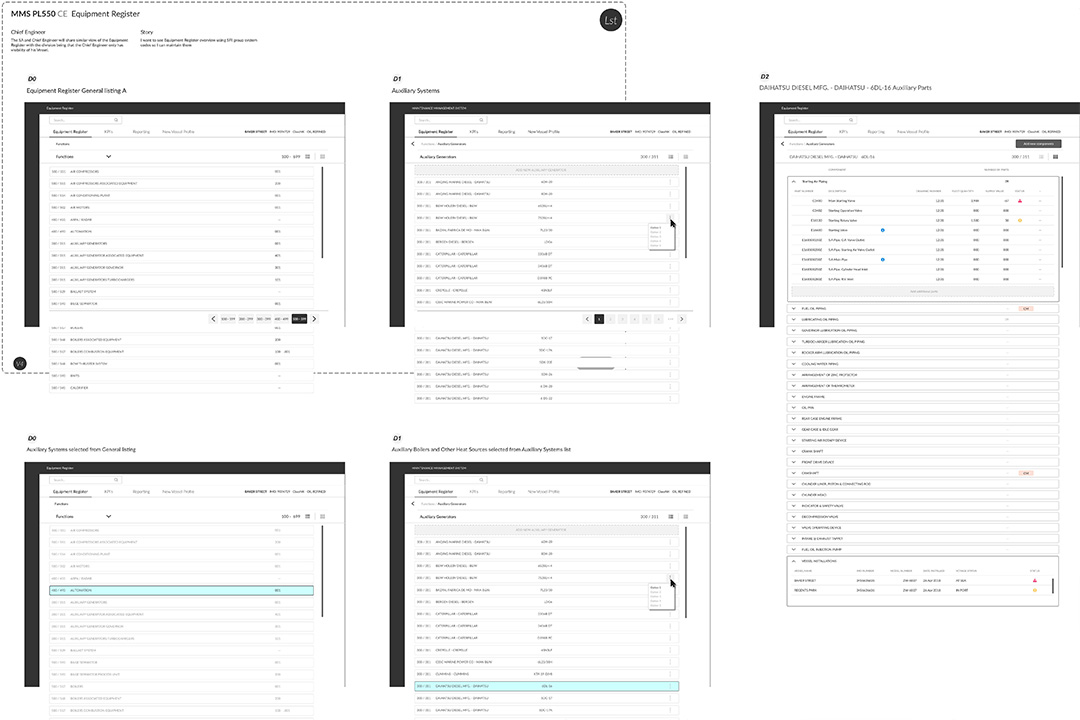
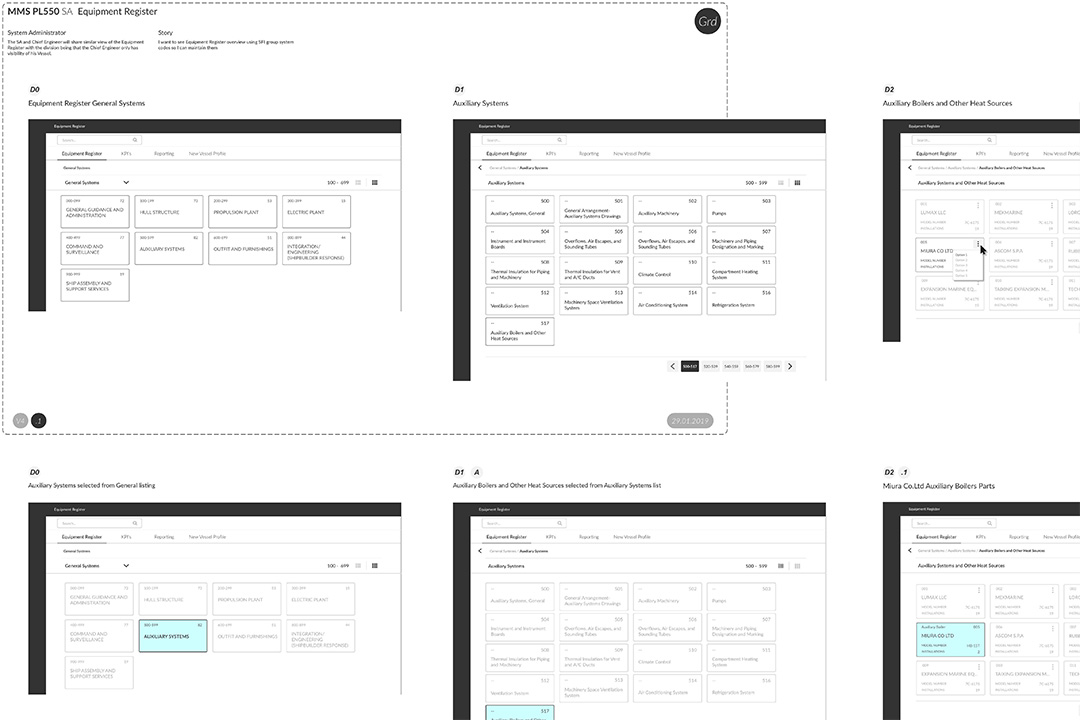
Prototypes
Prototype video demos were an efficient way to gain meaningful feedback from the team & gain consensus from stakeholders, but unsuitable for iterating & reflecting changing viewpoints rapidly.
Final Visuals
Final design utilies the ever evolving guidelines developed from other areas of the platform.
